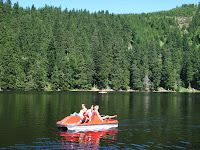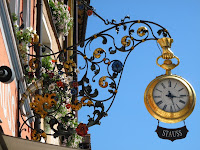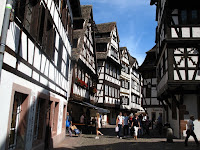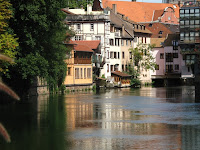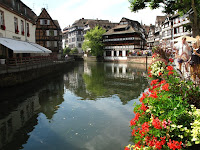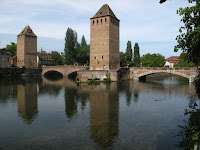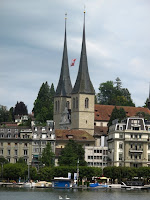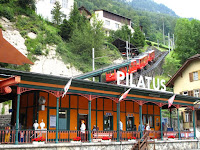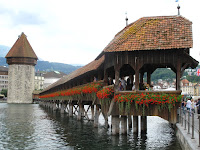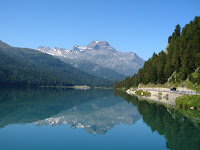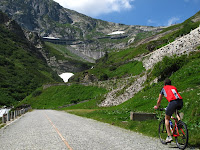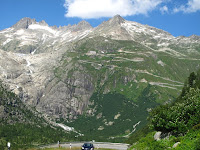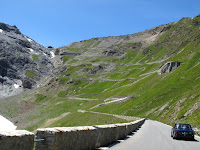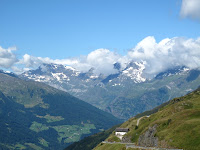 We had not gone 100m from our hotel when we found our intended route blocked by road works. This turned out to be a portent for the day as we encountered seven barricades across our path through the day. Thankfully, after a few “in one hundred metres make a U-turn” suggestions the sat-nav finally found a way around most of them. Two were across bridges barring our way into towns that we had diverted to see (in one case about 20km) but we did not bother to find another way across the river.
We had not gone 100m from our hotel when we found our intended route blocked by road works. This turned out to be a portent for the day as we encountered seven barricades across our path through the day. Thankfully, after a few “in one hundred metres make a U-turn” suggestions the sat-nav finally found a way around most of them. Two were across bridges barring our way into towns that we had diverted to see (in one case about 20km) but we did not bother to find another way across the river. Our first stop was at the epicentre of a meteor strike a few aeons ago; Nordlingen. This basically circular town, in the centre of the largest meteor crater on earth (25km diameter), is the only one left in Germany with a complete circuit town wall walk; of which we complete about a half before cutting back across the centre of town to check out the church, the largest building on earth made of Suveite, a stone created by the meteor impact.
Our first stop was at the epicentre of a meteor strike a few aeons ago; Nordlingen. This basically circular town, in the centre of the largest meteor crater on earth (25km diameter), is the only one left in Germany with a complete circuit town wall walk; of which we complete about a half before cutting back across the centre of town to check out the church, the largest building on earth made of Suveite, a stone created by the meteor impact. Back on the Romantic road we headed north through Wallerstein to Dinkelsbuhl, an easily accessible, relatively tourist free, extremely attractive town, for a coffee and a rather better Black Forest Gateau.
Back on the Romantic road we headed north through Wallerstein to Dinkelsbuhl, an easily accessible, relatively tourist free, extremely attractive town, for a coffee and a rather better Black Forest Gateau. A must-stop destination on the Romantic Road is Rothenburg ob der Tauber. The old town hall tower is worth the climb and the €2 cost for the views from the top. The access was definitely designed for a solitary bell polisher rather than the many tourists who were vying for use of the narrow steep stairs.
A must-stop destination on the Romantic Road is Rothenburg ob der Tauber. The old town hall tower is worth the climb and the €2 cost for the views from the top. The access was definitely designed for a solitary bell polisher rather than the many tourists who were vying for use of the narrow steep stairs.

Also worth the €2 entry was the St Jacob's Church to see the 500 year old wooden carved altar. This magnificent piece, carved by the “Michelangelo of German wood carvers” was made to hold a piece of rock crystal which contains a scrap of fabric “miraculously stained in the form of a cross by a drop of spilt communion wine.”
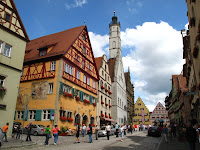

Another notable sight is a picture of St Peter wearing spectacles painted on the High Altar at the front of the church.
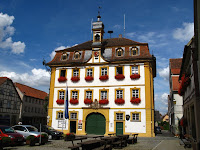 Outside we enjoyed a pleasant stroll around the town before setting off to find towns that were barred to us by road works. We did manage to call through Creglingen and Rottingen before finding our camp site for the night, just beyond Wurzburg.
Outside we enjoyed a pleasant stroll around the town before setting off to find towns that were barred to us by road works. We did manage to call through Creglingen and Rottingen before finding our camp site for the night, just beyond Wurzburg.









